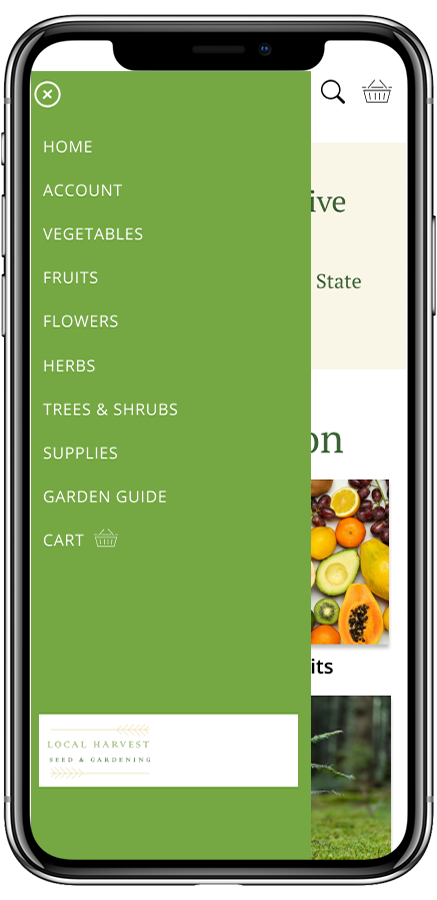Online Brand Design / UX
Challenge: Habitat loss has become widespread as a result of urban sprawl. Many people search for ways to restore their local ecosystems, but cannot find tangible methods to do so.
Solution: Local Harvest, an online garden supplies store that allows users to grow plants indigenous to their region, and become more educated about their region’s natural history.
Introducing Local Harvest: a visionary brand centered around the cultivation of native plants. Every facet of Local Harvest – from its logo, user-tested website experience, to its refined copy – was born from my dedication to environmentalism and design.
The Run-Down
In a world where the need for responsible ecological practices is paramount, Local Harvest stands ready to not only meet these expectations but exceed them. This is more than a brand; it's a testament to our dedication to preserving our natural heritage.
Research Summary
How could gardeners benefit from Local Harvest?
To answer this question, the first thing I considered is the general audience: gardeners. What is Local Harvest’s key age group? Why would gardeners care about environment restoration?
To answer these questions, I built out a few personas for my users. This allowed me to go deep into a variety of users and their needs. I focused on users who may be new to the practice as a whole so that Local Harvest may be a starting point for anyone.
A few key insights…
People new to native gardening will need to be introduced to their local climate.
Knowing when or how to plant purchased seeds can be a mystery to many.
Gardening lingo can be overwhelming.
Ideation
I settled on the idea of a region map present on the landing. This was the easiest way to solve sifting through 50 states while also getting the user more engaged with the process. I also made note of how extensive the product “Filter” and “Sort by” options would need to be. I turned to a multitude of already established gardening sites to find a smart sorting method.
I also implemented a “Garden Guide” to the site. Once users complete their purchase, they will have their new plant type in their guide alongside simple care instructions. This guide also opts to explain growing zones to the user, bettering their understanding of their locale.
I used Figma to design an information architecture and style guide for Local Harvest.
Mockups
User Testing
I contacted a local nursery and asked if I could come in and ask customers to participate in a usability test, ending up with a pool size of 7, ages 21 to 63.
Users found page buttons well, but struggled to navigate to previous pages.
Users wanted more product line-ups on the home page.
“How do I get this to go away?” (Referring to map state selection pop-up)
Users wanted more information about their zone on selected plant page.
Results
The second half of this project was the creation of mobile/responsive designs based off of the web design.
Using notes from the usability test, I implemented a hamburger menu to avoid difficulties maneuvering to previous pages.
The mobile section also replaces the map with a search bar, seeing as some states would be impossible to tap at such a size. Rhode Island-proof’d.
The state information page also includes historical information about the state, so that the user may become more eager and well-versed in their newfound passion.
What I Learned
This project helped me become more comfortable using components in Figma and Adobe XD. I am proud of the user journey that I was able to create for Local Harvest, and surprised myself by just how promising the brand idea became. If I could revisit this project, I would create a new logo, and orient Local Harvest to be an equally educational program as a product. I believe that Local Harvest’s education-first mission would end up developing a loyal, recurrent user base that would be eager to share not just a store, but the beginning of a new lifestyle and passion to new gardeners everywhere.

















